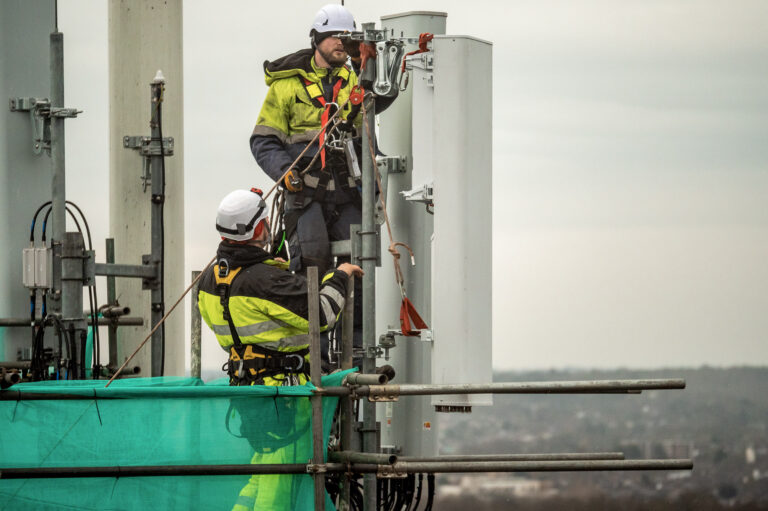The innovative new antenna design promises improved reliability, coverage and speeds, especially when partnered with Vodafone’s 5G rollout plans for the UK.
Vodafone has begun rolling out a new compact antenna from Ericsson to deliver better 5G capacity, coverage and performance across the UK without increasing the average mast footprint.
Ericsson’s latest design, the Interleaved AIR 3218, integrates the radio unit and antenna into one unit, delivering increased 5G capacity in a smaller footprint than previous designs. It also does not require an additional antenna unit like previous models and can transmit mobile data over all radio frequencies currently used by Vodafone in the UK. This combined multi-band, Massive MIMO design allows Vodafone to easily add performance and capacity to the mast without increasing its footprint.
Mobile phone props: everything you need to know
Finding a suitable site, securing planning permission and constructing a mobile phone pole can be more difficult and time-consuming than you might think. We explain why in the Q&A.
What used to be two separate components, the radio and antenna, are combined into one unit that can be easily mounted on roofs, towers, walls, and poles. This will simplify network site upgrades and installations and help accelerate the rollout of 5G in areas previously restricted by building regulations and planning laws.
Combining devices in this way can also improve the design of your site. Because movable masts have limited space for installing equipment, designers must also consider factors such as structural integrity and the weight that the mast can safely carry, especially in windy conditions.
Vodafone uses AR 3218 units with 5G frequencies of 900MHz, 3.4GHz, and 3.6GHz. These frequencies have been carefully selected to meet growing mobile data demands while improving network efficiency. These frequencies have already been approved for use in the UK.
Interleaved AIR 3218 is powered by the latest Ericsson Silicon processor that enables both high performance and energy efficiency. Compared to 4G, it can do more with fewer resources and transmit more gigabytes of data per watt of energy used (gigabytes/watt). The integrated design uses energy more efficiently than two separate pieces of equipment. Energy usage is a very important design consideration for Vodafone engineers, as the company’s network accounts for the majority of Vodafone’s annual energy consumption.
A basic guide to Vodafone UK’s network
Vodafone UK’s high-speed network is state-of-the-art, the result of billions of dollars of investment over the past five years. But how do all the pieces fit together?
Kerr Anderson, Head of Radio and Performance at Vodafone UK, said: “5G is the UK’s digital future, but we must never underestimate how difficult it will be to deliver a future-proof network at scale across the UK.
“Together with Ericsson, we are constantly exploring new ways to accelerate this transformation. This is another example of innovation being achieved through collaboration.”
Vodafone and Ericsson deploy drone surveys to speed up network upgrades
Together, the companies are piloting the use of drones and lidar-based 3D technology to speed up network planning and site upgrades.
Evangelia Zifa, Chief Technology Officer, Networks and Managed Services, Ericsson UK & Ireland said: Together, we are increasing 5G capacity without increasing the visual antenna footprint in the field.
“We are working to bring the benefits of next-generation connectivity to more people in the UK by enabling them to do more with less, while also reducing our impact on the environment and breaking the energy curve. I will continue.”
Follow us to get the latest news from Vodafone. twitter and linkedin Sign up for the News Center website notification.
Vodafone UK and Three UK combine to create Europe’s leading 5G network
Vodafone Group and Three UK owner CH Hutchison Group Telecom Holdings Limited have agreed to combine their UK operations.


